Resources by Jonathan C. Roach
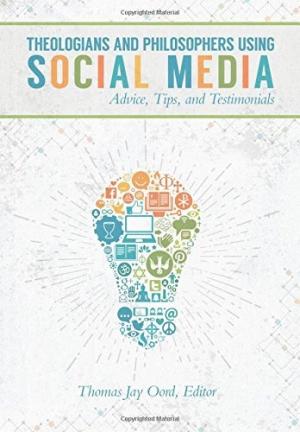
The insights in these 90+ essays are nothing short of inspiring! Their tips on best practices for social engagement, time management, social media as a resource for scholarship or creativity, technology and pedagogy, etc. will help readers tremendously. The contributors are diverse. They include.... - Public theologians like Ben Corey, Brian McLaren, and Richard Rohr - Younger scholars like Tripp Fuller, Jory Micah, and Alexis Waggoner - Biblical scholars like Michael Gorman, Joel Green, and Daniel Kirk - Philosophers like Helen De Cruz, Aaron Simmons, and Kevin Timpe - Establish scholars like James Crossley, Kwok Pui-lan, and Amos Yong - Scholars outside North America like Deane Galbraith, RT Mullins, Hanna Reichel, and Atle Sovik - Pastoral theologians like Patricia Farmer, Len Sweet, and Kurt Willems - Historical theologians like Kim Alexander and Christine Helmer - Science and religion scholars like Ron Cole-Turner, Karl Giberson, Lea Schweitz, and Jim Stump - Constructive theologians like Oliver Crisp, Grace Ji-Sun Kim, and Jason Lepojärvi - Ethicists like Miguel De La Torre, David Gushee, and Michael Hardin ...and the list goes on! Whether the reader is an armchair theologian, a professional scholar, a graduate student, or simply interested in how social media is changing religious and philosophical studies, that reader will find Theologians and Philosophers Using Social Media of great help.
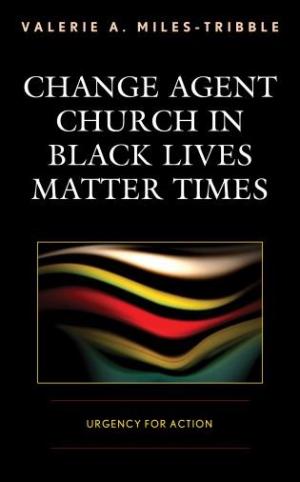
Volatile social dissonance in America’s urban landscape is the backdrop as Valerie A. Miles-Tribble examines tensions in ecclesiology and public theology, focusing on theoethical dilemmas that complicate churches’ public justice witness as prophetic change agents. She attributes churches’ reticence to confront unjust disparities to conflicting views, for example, of Black Lives Matter protests as “mere politics,” and disparities in leader and congregant preparation for public justice roles. As a practical theologian with experience in organizational leadership, Miles-Tribble applies adaptive change theory, public justice theory, and a womanist communitarian perspective, engaging Emilie Townes’s construct of cultural evil as she presents a model of social reform activism re-envisioned as public discipleship. She contends that urban churches are urgently needed to embrace active prophetic roles and thus increase public justice witness. “Black Lives Matter times” compel churches to connect faith with public roles as spiritual catalysts of change. (From the Publisher)
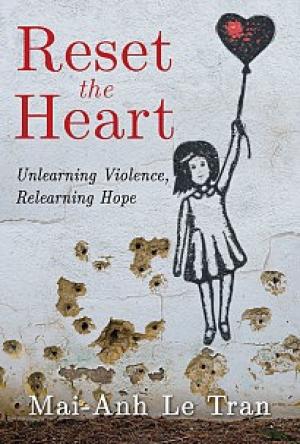
Mai-Anh Le Tran, an associate professor of religious education and practical theology at Garrett-Evangelical Theological Seminary, tackles a profound question in her book Reset the Heart: Unlearning Violence, Relearning Hope when she asks, “what does it mean to educate for faith in a world marked by violence?” Tran, who is a past president of the Religious Education Association, is an ordained elder of the United Methodist Church. This intriguing volume about the problem of faith in a violent world begins in August 2014 with the deaths of Eric Garner in New York City and Michael Brown in Ferguson, Missouri. Situated within this violence and racism, Tran allows three questions to guide her search for meaning and answers: “What does it mean to educate for faith in a world marked by violence? How are Christian faith communities complicit in the teaching and learning of violence? What new (or renewed) practices of faith and educational leadership can help us unlearn violence and relearn hope?” (10). The search for these answers provides her agenda for “resetting the heart” (10). Tran’s first two chapters struggle with her first question as she draws upon frameworks from social psychology, cultural studies, postcolonial theory, and racial formation theory. In Chapter Three, she examines the church’s complicity in the teaching and learning of violence. She offers a reframing of Charles Foster’s five major critiques of the church’s “catechetical culture” as a foundation of her answer. Finally, she attempts to answer her third question in Chapters Four, Five, and Six as she models relearning hope. Throughout this volume, Tran explores a number of subjects that interrelate with her subject including race as political theology, racism as a form of violence, religious education malpractice, and the erasure of historical memory. Her model for relearning hope includes practicing communicability, redeemability, and educability. She reminds her readers again and again of the vital importance of religious education and the role of the religious educator in fostering transformation. As she writes in her conclusion, “Let the people of God say ‘Amen.’ And let Christian religious educators remind the people what ‘Amen’ means” (164). Tran makes excellent use of a powerful theological writing technique rooted in what theologian Heather Walton describes as “performance autoethnography.” Her use of this technique makes the book’s content come alive in a faithful and academically solid narrative; Tran shows readers theology instead of just telling them. This is particularly true in her opening chapter as well as in Chapters Four, Five, and Six, when she integrates the support of 14 other theological voices that she engages as “theological reflectors.” This complex and stimulating writing does make the writing style in Chapters Two and Three, where Tran establishes her argument within the wider academic narrative, seem flat and uninspiring. Nevertheless, this is a very well-written narrative that is a pleasure to read. Tran provides readers with a valuable and insightful addition to the theological understanding of religious education. This volume should be added to all theological libraries and is a must read not only for academics who specialize in religious education but also for clergy and leaders in parish religious education.
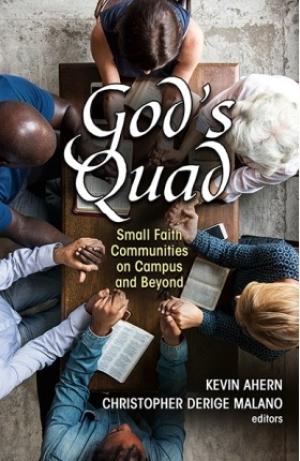
This edited volume of fifteen chapters and six appendices provides a thought-provoking study of Roman Catholic small group ministries on college campuses and in parish settings. The authors represent a diverse sample of laity and clergy who are serving in a variety of settings in Africa, Asia, Europe, North America, and South America. The two editors, Ahern and Malano, share a background in the International Movement of Catholic Students (IMCS – Pax Romana). Ahern currently serves as an assistant professor of religious studies at Manhattan College, and Malano is the pastoral administrator of the Newman Center at the University of Hawai’i – Manoa. They believe that the answer to the question, “where is God on the quad?” is “in small faith groups and student communities” (xvii). God’s Quad includes an Introduction, three sections, and appendices. In the Introduction, Ahern and Malano explain their three goals for this text. They write, “first, we want to draw more attention to the needs and realities of the ‘student church’…. the second aspect of this project is to highlight some of the ‘good news’ stories and best practices of small student groups… [and] the third and perhaps most important aspect… is to provide concrete and practical tools for student leaders and chaplains to build and strengthen small student communities” (xx, xxi, xxii). Part I, Revitalizing the Student Church, offers two chapters that examine the potential of small group ministries in light of Pope Francis’s writings on renewal. Ahern explores four key foundations – empowering, ecclesial, encompassing, and engaging – that he argues are necessary for effective student organizing and evangelizing. Listening is another important concept. Healey argues, “be a listening church first and a teaching church second… what if we really listened to youth and young adults – their concerns, needs, doubts, questions, criticisms, burning issues, hopes and dreams?” (17). The five chapters in Part II present global perspectives on Catholic student small group communities in Italy, Peru, India, Mali, and Eastern Africa. Part III complements Part II’s global views with North American perspectives from Boston College, Duke, the University of Hawai’i, Manhattan College, Purdue, as well as models of small group ministry at Catholic Relief Services and the Newman Catholic Center of Sacramento. These multiple case studies examine a variety of settings and models that illustrate the appeal and flexibility of these approaches. In addition, Karoue and Manola’s epilogue compares and contrasts many of the concepts in the book and brings it to a very successful conclusion. The editors also include five appendices with resources for small student groups including models for theological reflection. Ahern and Malano are to be commended for producing an engaging volume that is consistently of high quality across the various chapters, a rarity in edited volumes, as well as for providing geographical and background diversity. This is a well written, insightful volume that deserves to be included in theological libraries and in the collections of anyone who works in campus ministry, small group ministry, or who teaches these subjects.
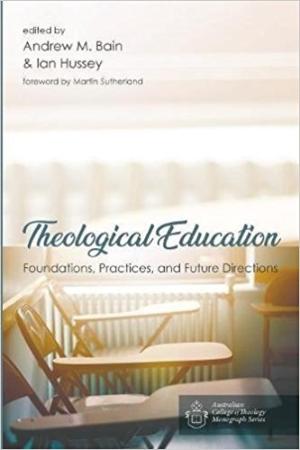
This edited volume of 21 articles explores the biblical and theological perspectives, historical foundations, current practices, and future directions of theological education in Australia and was published as part of the Australian College of Theology Monograph Series. The authors represent a wide array of theological disciplines including church history, Old Testament, New Testament, pastoral studies, Christian education, evangelism, spirituality, and theology. In addition to their academic disciplines, the authors come from a variety of backgrounds including adjunct faculty, faculty, administrators from academic intuitions and from the Australian and New Zealand Association of Theological Schools, as well as pastors mainly from evangelical perspectives. Building upon the concept that the church follows where theological education leads, the editors of this volume, Bain and Hussey, argue in their introduction that “theological education is too important a task to be done without careful and ongoing thought. The imperative to be reflective about how we go about our task as theological educator is amplified dramatically by the changing world in which we live” (xix). This volume attempts to survey this current reflection on theological education in the Australian context. The first section of this volume, Biblical and Theological Perspectives, offers three chapters that explore how the ontological view of the centers of theological education impact their praxis. These three chapters represent one of the most insightful parts of this book as the three authors all successfully explore how theological assumptions and perspectives shape how theological education has and is happening in Australia. Barker explains “I offer my reflections on how an evangelical understanding of what we are teaching should shape how we teach it” (4). Many of these same concepts emerge in Starling’s article, “The Scribe, the Steward, and the Inhabiting Word,” where Starling asks how these three metaphors “inform the way in which we seek to shape the curriculum for theological education in our own time and the institutions within which we teach it?” (25). In the second section, Historical Perspectives, six articles explore the historical foundations of theological education in Australia. These chapters examine a variety of themes including theological education in early Christianity, models of western theological education, the impact of American theological education (especially the recently closed Andover Theological seminary), as well as Australian specific chapters with histories of the Australian College of Theology and Sydney Missionary and Bible College. The third and largest section of this book, Current Practices, provides nine articles that examine a variety of current perspectives and groups within Australian theological education including: women, the Chinese immigrants, missional approaches, spiritual formation, attrition, cross-culture ministry, and an empirical exploration of who is currently engaged in theological education. The final section, Future Directions, offers three articles that explore future directions of theological education in the Australian context. Although these three authors provide solid chapters on telecommuting staff and challenges for theological education, this is the weakest section of this volume. After providing a broad foundation with historical perspective and current practices, the future directions lack the visionary perspectives of the rest of the book. It would have been wonderful if this section could have been expanded to examine many of the challenges identified in the Current Practices section. This title provides a valuable piece to the puzzle of theological education around the globe. Theological education is a complex endeavor and through the contextualization of various methods and historical models to it, the challenge of theological education can be addressed with wit and wisdom. This is an important volume and should be added to the collection of major theological libraries and institutions that explore the history of religion and/or approaches to theological education.
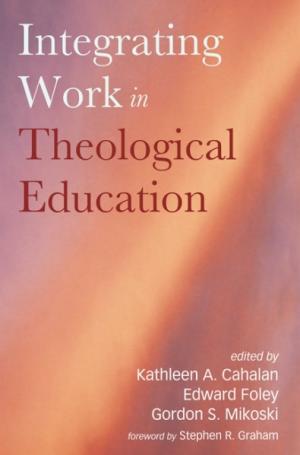
This intriguing 20-article volume edited by Kathleen Cahalan, Edward Foley, and Gordon Mikoski explores the question of integration in theological education. The editors, who also author multiple articles in this book, divide this text into four sections – schools, curriculums, courses, and frameworks – to engage integration. The authors represent a variety of disciplines in theological education including: practical theology, worship, Christian education, spirituality, ministry, leadership, and church history. In the introduction, Stephen Graham explains, “this book takes a very broad view of integration, using the term in three ways: making connections between bodies of knowledge, overcoming the divide between theory and practice, and enhancing what is called the ‘professional’ model by integrating intellectual, practical, and moral and professional aspects of theological education” (ix). Cahalan frames this volume with a very personal and robust essay. She writes, “I fear we have left it to the students to connect the dots between study, call, and ministry…the lack of integration in theological education and ministerial practice comes at a high price. It reverberates through the personal, ecclesial, and systemic messes we see every day in the church” (2). She then frames this book with various approaches to integration including: the split between theory and practice, divisions between various branches of theological study, and the integration between the intellectual, practical, and moral/professional domains. In the first section on schools, the authors consider integration across the wider school communities. Foley opens this section by examining the school as an agent in the integrating process. He broadens the concept of school to include formal, informal, and semi-formal education. After chapters on faculty development and renewal processes, Foley returns to provide a case study from Catholic Theological Union and an additional article to sum up this section. He concludes that “these are challenging times, but these challenges are also gifts, and they would be a terrible thing to waste” (71). The second section, on curriculums, addresses the opportunities and problems in the area of integration in theological programs of study. Cahalan begins by exploring the dynamics of seminary curriculum around the concept of integration. She argues that “if faculty want education to be more integrative, they have to do more than rearrange the courses and credits and defend their turf” (75). Then she outlines principles of curricular design to produce integrated learning. Her themes are continued in articles by David Rylaarsdam, who explores overhauling curriculum, Jeffery Jones, who gives special attention to the relationship between field education and the rest of the curriculum, and David Jenkins, who adds the needs of denominations to the mix of curricula drivers. The third section explores integration with courses. Mikoski starts breaking integration down to the course level including engaging the explicit, implicit, and null curriculum. After three well-developed case studies, Jeffery Tribble adds the concept of racial differences and Foley adds the challenge of online classes to the discussion on integration. Finally, in the last section, the three editors engage integration through three lenses: “as models, as practical wisdom, and as theology” (14). All three provide engaging conclusions that should propel readers to action. Although the target audience for this book is theological educators and administrators, this book offers important fodder for independent theologians and leaders of religious communities to consider. In addition to being well-written and clear, a very difficult task for an edited volume, this text unpacks some very complex educational theories and theological issues in accessible non-jargon packed language. Although this text could have benefited by exploring the politics and challenges of change in light of its call for integration, it presents a well-rounded and very worthwhile read. The concept of integration will remain an important topic for faculty, administrators, and religious leaders for years to come, and this book provides a valuable contribution to the discussion.
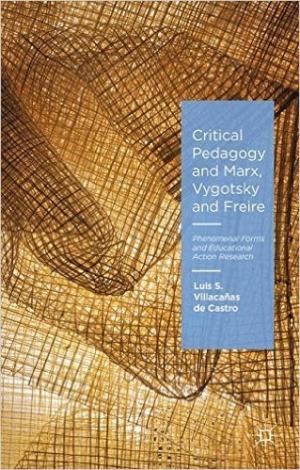
Luis S. Villacaňas de Castro, an assistant professor in the department of Language and Literature Education at the University of Valencia in Spain, wrote Critical Pedagogy and Marx, Vygotsky, and Freire as a companion volume to his earlier book The Copernican Turn and the Social Science, which was published in Spanish in 2013. Villacaňas de Castro writes extensively in epistemology, critical pedagogy, political philosophy, and language education and publishes in both Spanish and English. This volume has three sections and an introduction. In the introduction, the author explores the Copernican turn, which involves paradigm-shifting theories. He argues that four scientific theories qualify as Copernican turns: Freud’s psychoanalysis; Marx’s works in sociology; Neo-Darwinism; and the Theory of Relativity. Villacaňas de Castro explains that “a Copernican turn thus involves two kinds of knowledge: about the object and the subject; knowledge about specific realities; and also new knowledge about how human beings should understand themselves in relation to those four objects” (2). He argues that each Copernican turn creates epistemological obstacles, and he engages these obstacles through the lens of the German concept Erscheinungsformen, which he translates as phenomenal forms. The author explores “the threats and difficulties that the Erscheinungsformen pose to teaching and learning, and how educators should negotiate these obstacles” (5). Villacaňas de Castro uses the works of Marx, Vygotsky, and Freire to translate the epistemological obstacles into pedagogical problems and then engages pedagogical approaches to solve the problems (7). The author argues that these pedagogical approaches justify participatory action research as the most effective educational approach. The first section deals with Marx, Freud, and pedagogy. In Chapter I, Villacaňas de Castro introduces the major concepts of Marxist sociology and Freudian psychoanalysis in terms of pedagogical approaches to address the epistemological obstacles. Section II explores epistemology, critical pedagogy, and the liberal principle. The two chapters in this section engage concepts from Marx and Vygotsky to unpack and engage Erscheinungsformen. Villacaňas de Castro argues that this chapter reveals “a theoretical blind spot in Vygotsky’s pedagogy…which it is in the interests of critical pedagogues to resolve” (46). The work of Freire becomes key as Villacaňas de Castro develops this critical pedagogy in the form of social democracy. The last part of the book, Section III, explores the theory and practice of educational action research. Using Freire’s pedagogical approach and John Elliott’s liberal pedagogy, the author concludes “that John Elliott does not provide educators with a liberal pedagogy, but rather an appropriate method for them to fulfill their main critical goal: to help students understand the nature of the key subject matters that determine their life in society” (114). This supports Villacaňas de Castro’s argument and he concludes that participatory meta-action research is “an effective measure to break the vicious circle both students and I have fallen into” (144). This book is a very complex and abstract argument. Villacaňas de Castro’s academic writing style will throw off many readers. His sentence structures are very long (including a 141-word sentence on pages 86 and 87) with many embedded clauses. This makes attempting to unpack the already difficult concepts of Marx, Vygotsky, and Freire more challenging. However, the author develops a solid case for a stronger critical pedagogy rooted in participatory action research. Theological libraries that support programs with components of theological methodology should add this text to their collections. In addition, faculty and graduate students who are working with participatory action research should read this book to explore the epistemological foundations of their methodology.
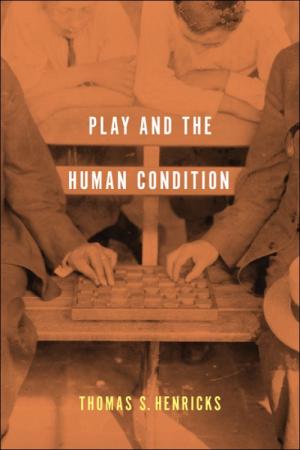
Thomas Henricks’ Play and the Human Condition provides a valuable guide to the academic study of human play. Henricks has been teaching at Elon University since 1977 as a sociologist. He has been studying human play since his PhD dissertation, which explored the relationship between sports and social stratification, and he has over thirty years of academic publications in play studies. In this volume, Henricks attempts to advance his thesis that “play is fundamentally a sense-making activity and that the broader goal of this process is to construct the subjectively inhabited sphere of operations and understandings called the self” (209). Henricks organizes this book into an introduction and nine chapters. He begins the introduction with three questions that guide his work: “How do we discover who we are? How do we determine the character of the world in which we live? And how do we decide what we can do in a world so configured?” (1). The introduction provides a rationale for studying play as well as an overview of the book. The first three chapters explore general models of play. In Chapter I, Henricks explores the difficulties around establishing a definition for play as he reviews several modern definitions. He presents six ways of understanding play: as action, as disposition, as experience, as context, as interaction, and as activity while he connects each model to their major theorists. The next chapter presents how play is different from other patterns of human behaviors including ritual, work, and communitas. The final chapter in this section develops a theory of play that centers upon self-realization. Henricks notes that “play best teaches people how to conceive self-directed lines of action and to mobilize varieties of resources to realize these ambitions” (89). In the middle of the book, Henricks devotes five chapters to various aspects of play including psychology, the human body, physical environment, social life, and culture. After focusing on the mind in his chapter on the psychology of play, Henricks turns to the human body and play in Chapter Five. While examining animal play, he concludes “play integrates symbolic and physically based meaning systems. . . play is a form of consultation between matters manifest and latent, known and unknown. In consequences, players extend and secure their understanding of themselves” (137). Next, he engages the physical environment and social aspects of play, because as he explains, “play is complicated by the presence of more than one player” (161). Chapter Eight builds upon the foundation of the earlier chapters to explore culture and play. This is an important chapter that engages the work of Geertz, Deerida, and Gadamer to list a few. Henricks’ final chapter weaves the various themes of the earlier chapters together to support his thesis. He examines the relationship between play and freedom. He concludes that “if play has a legacy, it is its continuing challenge to people of every age to express themselves openly and considerately in the widest human contexts” (227). Play and the Human Condition is a well-developed and scholarly text. Henricks engages a wide range of disciplines and carefully builds his arguments. The book offers a detailed road map to professional play literature that will be very useful to any scholar researching in this field. Except for a few terms, like communitas, this volume is accessible for the non-specialist. Theologians and graduate students should have no problem understanding and engaging this text in fruitful dialogue. This volume would be a good addition to major theological libraries. It is especially important for scholars and programs that explore ritual studies and hermeneutics. Chapter Four, on play as therapy, gives a foundation for this important approach to clergy who want to explore this avenue of pastoral care and counseling.
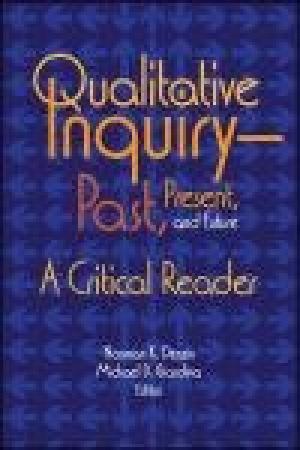
Norman Denzin and Michael Giardina have edited an amazing collection of cutting-edge articles on qualitative research methodologies and methods in their new volume, Qualitative Inquiry Past, Present, and Future: A Critical Reader. The editors selected twenty-four chapters for this volume from nine years of the Congress of Qualitative Inquiry proceedings.The authors represent a variety of disciplines including sport studies, education, psychology, sociology, communications, and gender studies. In the opening chapter, Denzin and Giardina provide an overview of the developments and arguments in qualitative research methodologies since the Congress published its first volume in 2005. They argue that qualitative research is “at a pivotal crossroads: We live in a historical present that cries out for emancipatory visions, for visions that inspire transformative inquiries, and for inquiries that can provide a moral authority to move people to struggle and resist oppression” (12). They explore the paradigm wars since the 1980s and create the space for this volume in the works of C. Wright Mills, Paulo Freire, bell hooks, and Cornel West. After this introduction, the book is divided into four sections, a coda, and an epilogue. Section I contains four chapters that explore the Philosophy of Inquiry. These chapters engage important concepts including disciplines sharing language using Bakhtin’s concept of chronotopes, the turn towards praxis, the role of institutional review boards, power, research ethics, as well as subjects and agency. The six chapters in Section II (Politics of Evidence / Politics of Research) explore the struggle between qualitative research and the privileged position of scientifically based research.The authors then highlight a variety of factors that threaten the legitimacy of qualitative research including pressures from pro-profit universities, the diminished role of faculty in university governance, and the rise of the national security state. Henry Giroux writes that “these may be dark times… but they don’t have to be, and that raises questions about what educators are going to do within the current historical climate to make sure that they do not succumb…. Resistance is no longer an option, it is a necessity” (216). Section III, Methodological Imperatives, contains some of the most provocative and practical articles for active researchers. These articles engage an array of methodological techniques including empathetic interviewing, ethnography, performative writing, art-based methods, and autobiographical methods. Halley’s article on the production of death and Dillard’s work on memory and spirituality in particular push the frontier of methodological discussions. Section IV, Indigenous and Decolonizing Interviews, provides four articles that advance the role of social justice in the research agenda. These authors engage multiple levels of struggle and as Puebla argues, “our knowledge about the social world has been tremendously useless when dealing with the urgency of social justice, social change, and democracy” (387). In the Coda, Ellingson stresses the passion and pleasure of paying attention. The Epilogue contains an engaging dialogue on the future of qualitative inquiry. The dialogue itself was the result of e-mail exchanges between the two editors and five additional authors. Denzin and Guardina conclude: “qualitative inquiry is being pulled in multiple directions at once: pushing the boundaries of both traditional social science and interpretive research; engaging in struggle against oppressive institutional and political machinations, balancing the need for deep theoretical engagement with a praxical approach to the research act; and striving to engage with (if not change) the landscape on which qualitative inquiry currently sits… we have a job to do; let’s get to it” (462). This is a powerful and inspirational volume. It is global in scope with articles from the United States, Europe, Africa, and New Zealand. The individual articles contain excellent bibliographies and insightful conclusions. They are well written and easily accessible to graduate readers. This volume is an important addition for theological libraries that serve schools with degrees in practical theology, emphasis in social justice, chaplaincy programs, and doctor of ministry degrees. Professors who teach theological methodological approaches and methods should consider adding selected articles from this volume to their required reading.
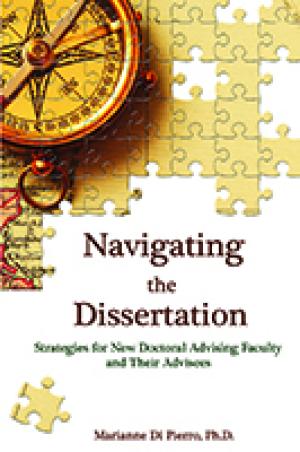
The high attrition rate of doctoral candidates remains a major problem for higher education in the United States. Drawing upon her experience as the manager of graduate research and retention at Western Michigan University, Di Pierro offers an engaging text aimed at new faculty who are advising candidates and their advisees. Di Pierro argues that “despite abundant research and often-echoed affirmations that something must be done to quell doctoral attrition, progress is essentially hampered by a reluctance to recognize that advising faculty cannot continue to work with doctoral advisees by replicating models that are passé” (1). She believes that faculty and candidates need to be aware that models have changed “and are moving in the direction of collaborative, integrative, and interdisciplinary styles” (10). Furthermore, faculty need formal advising training before directing dissertations or serving on committees. Di Pierro makes dissertation committee work a reoccurring subject throughout this book. She begins by addressing communication within committees and with the advisee. She covers expectations, roles, duties, expertise, and responsibilities not by offering a model but by outlining the areas the advisor needs to establish to ensure healthy and helpful communication on the committees. She also explores topics such as vetting a committee by the candidate, dealing with toxic committees, and considerations for faculty members to consider before accepting a role on a committee. Another major subject of Di Pierro’s work is the actual writing of the dissertation. She explores subjects including finding a dissertation topic, the role of literature reviews, concept papers, maintaining draft files, combating the writing blues, responding to plagiarism, and working with human subject review boards. Building on the theme of communication, some of Di Pierro’s strongest chapters cover expectations for editing both from the perspectives of the advisors and the advisee. She explains line-by-line editing versus conceptual editing, explores using technology to give editorial feedback, and engages the problem of when editorial feedback is not working. In her final chapters, Di Pierro offers a number of ideas including developing a “Student’s Bill of Rights” and a “Dissertation Advisor’s Bill of Rights” (173-174) and dealing with the post-dissertation blues. In her closing, she presents her views on the future of doctoral education by calling for the establishment of dissertation wellness checks and envisioning the creation of Graduate Centers for Scholarship, where candidates will find writing experts, statisticians, qualitative and quantitative methodological experts, and digital technology experts all in one place. Di Pierro’s work is very reader-friendly with take-away lists, end-of-chapter biographies, and checklists, but the overall organization of the chapters seems out-of-sync. The author jumps around quickly from topic to topic and back again frequently. That said, the content of the chapters is valuable for its intended audience. Chapter 25, which provides an outline of each chapter, is a useful tool for navigating the book itself. For schools of theology and seminaries, dissertation completion and dissertation quality are important subjects for both PhD and Doctor of Ministry programs. With limited resources for faulty training, Di Pierro’s book offers a valuable discussion starter for faculty and administrators and could serve as a planning tool for overhauling program handbooks. This title is strongly recommended for academic libraries with PhD and Doctor of Ministry programs, veteran faculty who want to improve their advising for candidates, as well as the book’s target audience of new doctoral advising faculty and their graduate students.
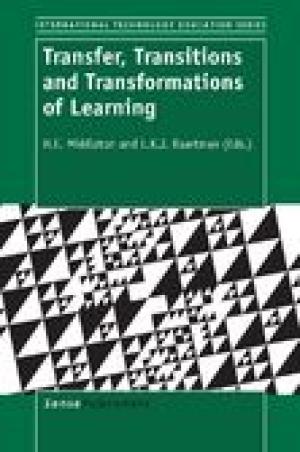
This edited volume of eleven articles explores the concepts of transfer, transitions, and transformation within a focus of educational technology. This title is part of the International Technology Education Series, and the authors mainly come from the field of education. The articles engage a number of fields including: engineering, science, technology, vocational education, nursing, and architecture. The opening chapter provides a literature review of transfer, especially in relationship to transitions and transformation. A successful transfer is defined as “a product where something learned in one context is used to assist learning in another context” (2). The authors explore this concept in regards to motivation, sameness and difference, unproductive transfer, transfer in relationship to transitions and transformation, and transfer as boundary crossing. After this introduction, various authors offer research studies and exploratory essays around these subjects. Several of these studies deserve special mention. Bjurulf’s chapter on the LISA (Learned in Several Arenas) Project explores transfer between work and school within vocational education. This research study uses semi-structured interviews to explore the nature of transfer. Her research supports the conclusion that the transfer of knowledge must be a holistic blending of practice and theory. Another article by Baartman, Gravemeijer, and De Bruijn examines transfer in relationship to technology in non-technical jobs as boundary-crossing skills. They engage transitions, which encompass successfully taking a learned concept from one situation and applying it to another situation. For these authors, and in a number of articles in this book, transfer occurs as a consequence of transitions. Baartman, Gravemeijer, and De Bruijn observe that boundaries should be viewed as learning opportunities as students work to successfully take skills back and forth between school and the workplace. They indicate that it is important to design education for successful transitions that empower boundary-crossing opportunities. Some of the articles, such as Pavlova’s and MacGregor’s, focus upon transformation and transitions, but many of articles do not engage either concept. Both Pavlova and MacGregor engage transformation in terms of the self and as social change. For Pavlova, transformation is demonstrated in both critical self-reflection and emancipatory change. MacGregor focuses on factors that foster or inhibit transformation in teachers as they make the transition from their last year at university to their first year in teaching. MacGregor’s transformation also engages self-reflection as teachers’ identities are transformed by their experiences of teaching and learning. Many of these studies might be considered essays or well-developed literature reviews rather than research studies, because they lack an identifiable research methodology. Overall, the various articles appear to be disconnected and underdeveloped with the exception of the authors mentioned. A final concluding chapter would have been helpful to weave these articles together and draw some overarching conclusions. However, the articles are easy to read, contain good bibliographies, and provide an introduction to the scholarly discourse around transfer. For theological education, transfer is an important aspect of field education. The relationship between theory and practice and methods of creating transfer between the two is critical for the quality of theological education, but the value of this title for theological education is limited. Theological schools with strong pedagogical educational programs or terminal degrees in education might benefit from adding this title to their libraries. Universities with graduate educational programs would want to add this title, especially for those with vocational teacher preparatory programs.
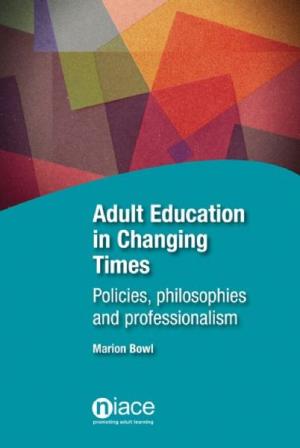
Marion Bowl’s Adult Education in Changing Times: Policies, Philosophies, and Professionalism explores the impact of changes in global policy on the field of adult continuing education. She teaches as a Senior Lecturer in the School of Education at the University of Birmingham in the UK. This title is Bowl’s most recent in a long line of publications on adult and continuing education. Bowl states “this book explores how adult educators – their work, their expectations, and the expectations laid upon them – are being affected by the changing political and economic environment” (5). She asks “why, when lifelong learning has been a policy priority for the past 40 years, does publicly funded adult education appear to be fighting for its life? And why do so many qualified, skilled, and experienced adult educators find themselves in an educational landscape that does not recognize or value their contribution?” (1). She begins by tracing the development of neoliberalism and its impact upon adult education specifically in England and New Zealand, examining the scope and definition of adult education and exploring adult educators’ beliefs and values. She then divides the rest of the volume into two sections: “Historical and Political Contexts for Adult Education” and “Adult Educators’ Working Lives Researched.” The first section presents a brief historical overview of adult education, including the impact of the Protestant Reformation, the Enlightenment, colonial expansion, urbanization and industrialization, post-World War II institutions, and globalization. The author pays particular attention to institutions, including UNESCO, OECD, the World Bank, and the European Union. She ends her historical survey by examining the role of professionalism and professionalization in the development of adult education. In the second section, Bowl explores policy and practice using her interviews with sixty-two educators in the field of adult education, evenly split between England and New Zealand. Interviewees were invited to discuss their career histories, their values and philosophies, how the field has changed over their careers, and perceived challenges and opportunities (76). She brings their narratives together to fashion a picture of adult educators’ working lives. Her findings on these educators’ attitudes toward theory, particularly the approaches of Paulo Freire and Carl Rogers, provide some interesting conclusions. In addition, her discussion of the factors impacting career identity are very insightful. Bowl ends her book by offering lessons for changing times (153). This is arguably the strongest chapter of her book and deserves to be expanded. She argues that the shifts in adult education – the growing emphasis on economic ends, marketization, the view that adult education is an individual responsibility, and tighter monitoring of educator standards – have deeply impacted the field. She advocates for a stronger linking of political engagement with pedagogical approaches; argues against hegemony in education, including preordained outcomes; supports more scrutiny of the use of power; and argues in favor of a stronger exercise of agency by educators. Finally, she notes that educators must be more willing to engage theory and politics for a “re-birth of radical education” (166). This book is well written and contains an excellent bibliography which provides a road map to these areas of the professional literature. The historical overview, however, is very limited. For example, the Protestant Reformation receives only one paragraph, and the book’s scope covers only England and New Zealand. Despite these limitations, Bowl’s scholarship provides a great starting point for explorations into these subjects in other contexts. Even though Bowl does not address theological education, adult education remains an important topic for theological education. Theological continuing education needs more discussion about its theoretical foundations and approaches, and Bowl provides a good starting point. Adult Education in Changing Times would make a good addition to progressive theological libraries with strong educational programming and terminal degrees with tracks in religious education.
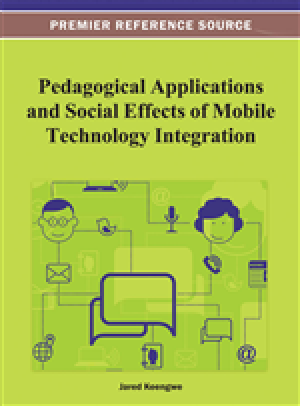
This edited volume of seventeen articles explores the impact of mobile technologies on the field of education. In the Foreword, authors Greg Levitt and Steven Grubaugh believe “we are at the forefront of a computing paradigm shift that will change how teachers and students interact with the world of educational connectivity, content, pedagogy, and learning” (xiv). Since the introduction of the first touch screen cell phones in 2007, mLearning [mobile learning] educators have been engaging the possibilities and potential of this technology for education. The editor argues that the capabilities of mobile technologies make “each student’s end user experience with mobile learning . . . much richer than it might be on a computer” (xiv). The authors represent a variety of disciplines including education, management, engineering, computer science, and instructional technology. The volume is divided into two sections. The first offers fourteen chapters on the theme of pedagogical applications for the best practices in mobile technology integration (xvii). These articles explore a variety of platforms including e-readers, i-Pads, GPS devices, and various mobile phones and tablets. These devices give mLearning “two distinct features… [one,] it allows educational processes to take place anywhere and at any time; and two, it includes any kind of handheld device which is small and easy to carry and that uses a communication technology” (194). Several articles engage BYOD [bring your own device] programs, new literacies, digital storytelling, microblogging, web 2.0 and 3.0, social media, and flipped learning. They examine the impact of moving from static information to interactive and socially connected, collaboratively produced information with Web 2.0 and 3.0 tools. They argue that mobile devices shift pedagogy from a teacher-centered classroom to a student-centered one (124). The second section provides three chapters on the subjects of social applications and tools for effective mobile technology integration (xviii). The articles examine user-generated content and the social implications of mLearning for global learning. Even though none of these articles specifically address theological education, mLearning will impact theological education in the near future. Seminaries and Schools of Theology have been slow to incorporate new technologies into instruction. However, as the text points out, the adoption rate of mobile devices worldwide has outpaced all past technologies including radio, television, desktop computer, and laptop computers (206) and theological education will need to address this societal change. The power and the challenge of mLearning is that it is constantly changing. What an author explores in an article today might be outdated by the time it is published. The epistemological questions and approaches of this text will remain valid for years, but the technological applications will only be valid for a few years. Designing a twenty-first century theological curriculum requires faculty to prepare students to live, work, and do ministry in an increasingly complex, technologically savvy world, and this volume is a good discussion starter. Two important technological issues are highlighted for schools to consider: what is their capacity to integrate mLearning devices with their existing platforms, and will the school provide the device or ask students to use their own (197). For administrators and faculty who want to investigate mLearning, chapter 13 “Quality Education for Children, Youth, and Adults Through Mobile Learning,” and chapter 14 “The Changing Roles of Faculty and Students when Mobile Devices Enter the Higher Education Classroom,” provide an excellent introduction to the field, suggest implications for pedagogical practices, and outline advantages and challenges of this technology for learning. This book is recommended for theological libraries which support institutions with online education programs.